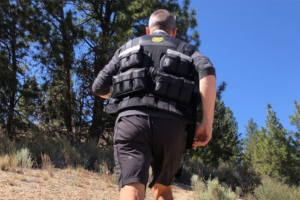August 30, 2025
Level Up Your Workouts: What to Know Before Strapping on a Weighted Vest

Thinking about trying a
weighted vest? You are not alone. These versatile fitness tools have become increasingly popular because they can make regular workouts more challenging, improve endurance, and even help with weight management. Before you dive in and buy one, there are a few things you should know to ensure you get the most out of it safely and effectively.
What Is a Weighted Vest?
A weighted vest is exactly what it sounds like a vest you wear that adds
extra weight to your body. The added resistance makes your muscles and cardiovascular system work harder, even during exercises you already do. Vests come in different weight capacities, from as little as 5 pounds up to 80 pounds or more. The one you choose depends on your fitness level and your goals.
Benefits of Using a Weighted Vest
The biggest advantage is efficiency. You
burn more calories doing the same exercises because your body has to move more weight. For cardio workouts like walking, jogging, or stair climbing, a vest can increase heart rate and endurance without requiring you to work out longer. Strength training also benefits because adding resistance activates more muscle groups, improving overall muscle tone and bone density.
Weighted vests can also improve
functional fitness. Everyday activities like walking up stairs, carrying groceries, or playing with your kids become easier over time. That is because your body adapts to moving with extra weight, making regular movements feel lighter.

Start Light and Go Slow
One of the most common mistakes beginners make is starting too heavy. Adding too much weight too quickly can put unnecessary
strain on your joints and back, increasing your risk of injury. A good rule is to start with a vest that is about 5 to 10 percent of your body weight. If you weigh 150 pounds, begin with a 10- to 15-pound vest. You can always add more weight as you get stronger and more comfortable.
Best Workouts to Try
Weighted vests are versatile and can be used during many types of workouts:
Walking or Hiking: Great for beginners because it is low impact but still challenges endurance.
Bodyweight Exercises: Squats, push-ups, lunges, and burpees become significantly more challenging with added weight.
Cardio Workouts: Running, stair climbs, or HIIT routines with a vest push your cardiovascular system harder.
Strength Training: Adding a vest can improve resistance without needing to hold weights in your hands.
Safety Tips
Pay attention to posture and form. Adding weight shifts your body’s balance, so you need to stay aware of proper alignment. Start slow, listen to your body, and avoid wearing the vest all day, especially at higher weights. If you have back, knee, or joint issues, it is best to talk to your doctor or trainer first.
The Bottom Line
A weighted vest can be a fantastic tool to boost calorie burn, build strength, and increase endurance, but only when used correctly. Start light,
progress gradually, and choose exercises that match your fitness level. With the right approach, you can make your workouts more effective without overdoing it.